11 of History’s Most Infamous Automotive Scandals
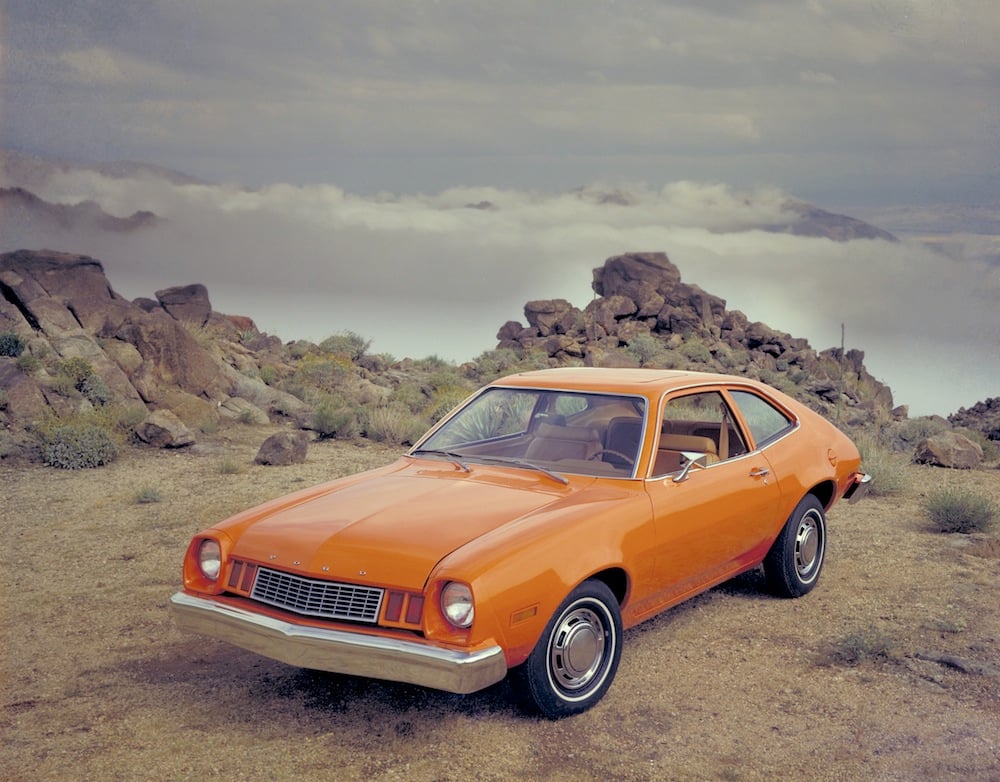
 Source: Ford
Source: FordIt’s hard to be a Chevy or a Ford man when your company is accused of building cars that kill people. There’s nothing quite like the love millions of gearheads around the world have for their cars, but nothing brings a conversation about cars down to earth faster than allegations of coverups and criminal negligence.
Despite the countless debates over whether a certain car has soul or personality, the truth is that car manufacturers are businesses, and they’re looking for ways to maximize profits and reduce operating costs. Sometimes this happens at the benefit of the customers, and sometimes the results are catastrophic.
Whether it’s “just business” or a legitimate safety issue, car companies have been bending laws and regulations since the industry began, and with 2014 being the worst year for recalls in automotive history, that’s unlikely to change anytime soon.
Unsurprisingly, the biggest scandals in automotive history have usually dealt with safety, but there have been others that were so audacious they made national headlines. From the annals of automotive history, here are 10 of the most infamous automotive scandals of all time.
Editor’s Note: This article has been updated with new information.
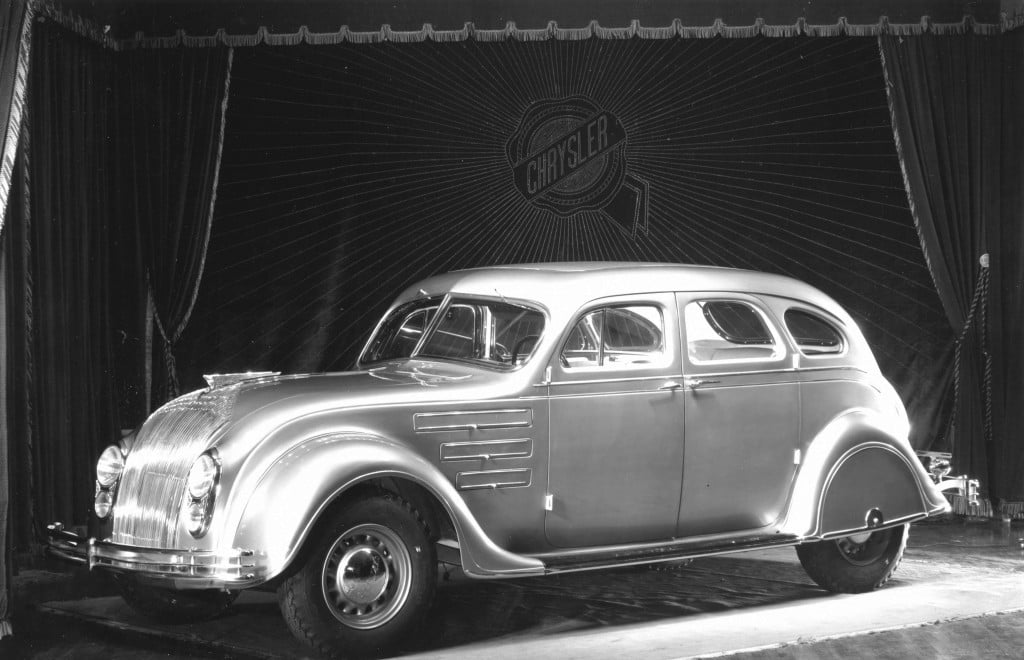 Source: Fiat Chrysler Automobiles
Source: Fiat Chrysler Automobiles1. General Motors buries the Chrysler Airflow
Introduced in 1934, The Chrysler Airflow was one of the most aerodynamic and advanced cars ever built, and it posed a major threat to the automotive status quo. Its radical streamlined design made it stand out from anything else on the road — and General Motors was furious that the smaller Chrysler had built a more advanced car than it could.
It retaliated by buying advertisements in the Saturday Evening Post claiming that the radical Chrysler was plagiarized from a top-secret GM design (which never surfaced) and presented a danger on the roads.
Chrysler responded by releasing an amazing newsreel showing the Airflow’s advanced suspension (by shooting out a tire at high speed), its use of safety glass (by having a pitcher throw a fastball at it without shattering), rolling it over (and driving away), and finally, driving it off a 110-foot cliff, then driving it away with out so much as a shattered window.
The Airflow’s uni-body construction (a method still used today) was all steel at a time when most cars still used wood in their construction, and it offered almost modern safety at a time when even low-speed accidents were life-threatening. Astonishingly, GM’s smear campaign was successful: It faced no repercussions for its actions, and the ground-breaking Airflow was discontinued in 1937.
 Patrick Ernzen/RM Sotheby’s
Patrick Ernzen/RM Sotheby’s2. The Tucker fraud charges
Unveiled in 1948, The Tucker captured the public’s imagination thanks to its bold, streamlined styling, advanced safety features, and successful fundraising campaign by the company’s charismatic founder, Preston Tucker. Designer of a successful gun turret for the U.S. Navy during the war, Tucker mounted a national advertising campaign and traveled across the country in his futuristic car, selling stock, dealership franchises, and taking down payments on cars to raise money for production. But the company was nearly broke from the start, and the money he raised was used to keep the lights on at his Chicago factory.
With advanced safety features like a padded dash, reinforced safety cell, shatterproof pop-out windshield, and a center headlight that turned with the front wheels, the Tucker 48 was revolutionary for its emphasis on passenger protection. Unfortunately, the company’s business practices were suspicious at best. To shore up some much needed cash, Tucker began selling options and accessories to customers whose cars hadn’t been built yet, and when a number of setbacks kept delaying the start of production, the government got involved. In 1950, the U.S. Securities and Exchange Commission indicted Tucker and his board of directors for fraud, and shut the company down.
The Tucker factory was closed after just 51 cars were built, and the company’s high profile made the indictments and seizure a national scandal. Today, the Tucker’s rarity and place in history makes it one of the most desirable classic cars in the world. The car pictured above was sold by RM Sotheby’s in August for $1,567,500.
 Source: Chevrolet
Source: Chevrolet3. The Chevrolet engine mount recall
In 1969, the National Highway Traffic and Safety Administration received a report of defective Chevrolet engine mounts that could set off a potentially deadly chain reaction. When it took the issue to General Motors, the corporation replied that it had already received “172 reports of failed motor mounts, with 63 accidents and 18 injuries.” Astonishingly, Instead of taking action, both GM and the NHTSA kept quiet for nearly three years before publicly acknowledging the issue.
The engine mount used on 1965 to 1969 full-size Chevys could potentially collapse at speed, torquing the engine out of position and placing stress on the throttle body linkage, causing unintended acceleration. The movement could also twist automatic transmissions out of place, making it impossible to shift the cars into park. During its investigation, GM revealed to the NHTSA that it had been using the same engine mounts for its cars since 1958.
Seeing how horsepower and engine displacement exploded during the 1960s, these outdated components weren’t designed to handle the extra work. The media began to take notice, and citing the mounting “publicity which has been given the issue” — not the legitimate safety concerns — GM announced on December 5, 1971, that it would recall a whopping 6.5 million vehicles and fix the issue.
 Source: Ford
Source: Ford4. The Ford Pinto recall
Introduced for 1971, the Pinto was designed to take on the rising tide of imports that had come to dominate the entry-level market. For a time, the car was a major success, selling 328,275 cars in its first year on sale. But the Pinto had a fatal flaw, and Ford knew about it all along.
In a rear-end collision, the fuel filler neck could separate and puncture the fuel tank, spraying fuel into the passenger compartment and igniting. In an exposé in Mother Jones in 1977, it was revealed that Ford had known about the defect before the car even went to production, but decided it would be too expensive to fix — the cost to safely upgrade the fuel system would’ve added $11 to the cost of each car. A shield to protect the tank from rupturing would have only cost $1.
To make matters worse, a chilling memo from 1973 was leaked to the media that outlined (by Ford’s bean counters’ estimates) how many deaths to expect per year from the defect and how much it expected to cost the company per lawsuit. The memo ultimately decided that this was cheaper for the company than spending the money to fix the problem. By 1978, the public outcry was so strong that Ford reluctantly recalled 1.5 million Pintos (and the identical Mercury Bobcat), and made the life-saving modifications to the fuel system.
As many as900 people died as a result of the car’s fatal flaw. Proving its cost-benefit analysts wrong, Ford ended up paying hundreds of millions of dollars in civil suits, which had a major impact on the company’s financial stability well into the 1980s.
 Source: Ford
Source: Ford5. The Ford transmission defect
On the ropes after paying out millions to victims of the Pinto debacle, Ford faced another disastrous recall in 1980 after the NHTSA announced after a three-year investigation it found that Ford automatic transmissions built between 1966 and 1980 contained a defect where they could slip from park into reverse, causing them to roll unexpectedly.
After reports by Mother Jones and the Detroit Free Press, it came out that the company had known about the defect since at least 1972, and rejected a design improvement that would have cost $0.03 per car to fix the issue. Instead, the company chose to quietly pay $20 million to victims and their families.
After finding that the defect was the cause of 777 accidents, including 259 injuries and 23 deaths, the NHTSA was on the verge of issuing a 23-million-car recall — a move that would have likely bankrupted Ford. In 1981, company executives pleaded poverty to the Reagan administration, and a compromise was struck: The company would mail out 23 million stickers to Ford owners to put on their dashboards, reminding them to “make sure the gear selector lever is fully engaged in Park,” and to “fully engage the parking brake” before turning the car off.
It was enough for Ford to successfully dodge what would have been the largest recall in history, but it came at a terrible cost. By 1984, it was reported that the official death toll from the dangerous transmissions had risen to 77.
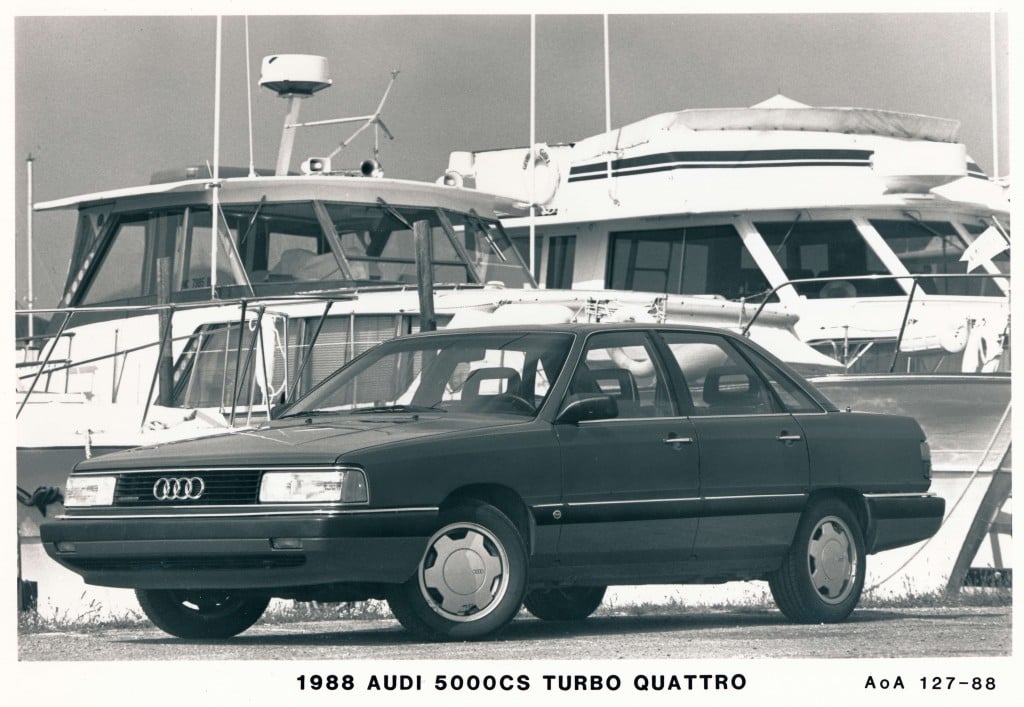 Source: Corporate Archives of Audi AG
Source: Corporate Archives of Audi AG6. Audi’s unintended acceleration debacle
Audi may be a luxury juggernaut today, but in the late ’80s, it was reeling from a scandal that nearly knocked it out of the American market for good. Introduced in 1982, the Audi 5000 was a good-looking sporty sedan that was key in helping establish Audi as a premium luxury brand.
Unfortunately, the company’s image was sucker-punched on November 23, 1986, when CBS’s 60 Minutes ran a shocking exposé on the 5000, interviewing owners who claimed that their cars would suddenly accelerate. To prove its point, 60 Minutes ran footage of an unoccupied 5000 jolting forward under its own power. What viewers didn’t see is that the car was modified by the TV crew, and moved by an air compressor forcing it into gear.
Audi didn’t help matters by coldly insisting that all the accidents were caused by driver error, and running condescending ads with quizzes about its cars that said “If you can pass this test… you’re ready for an Audi.” But in reality, the company was right. Tests in the U.S., Canada, and Japan all concluded that drivers confused the the Audi’s narrow (and narrowly spaced) gas and brake pedals, leading them to believe that their brakes failed when they were actually flooring the car. Audi was vindicated, but the damage had been done.
The 60 Minutes piece set off a panic, and after selling more than 75,000 cars in the U.S. in 1985, sales had trickled to a mere 12,000 cars in 1991. It would take Audi nearly 20 years to return to its pre-1986 American sales numbers. Nearly 30 years later, the 60 Minutes report has gone down in history as one of the most sensationalistic and misleading news stories in the history of modern journalism.
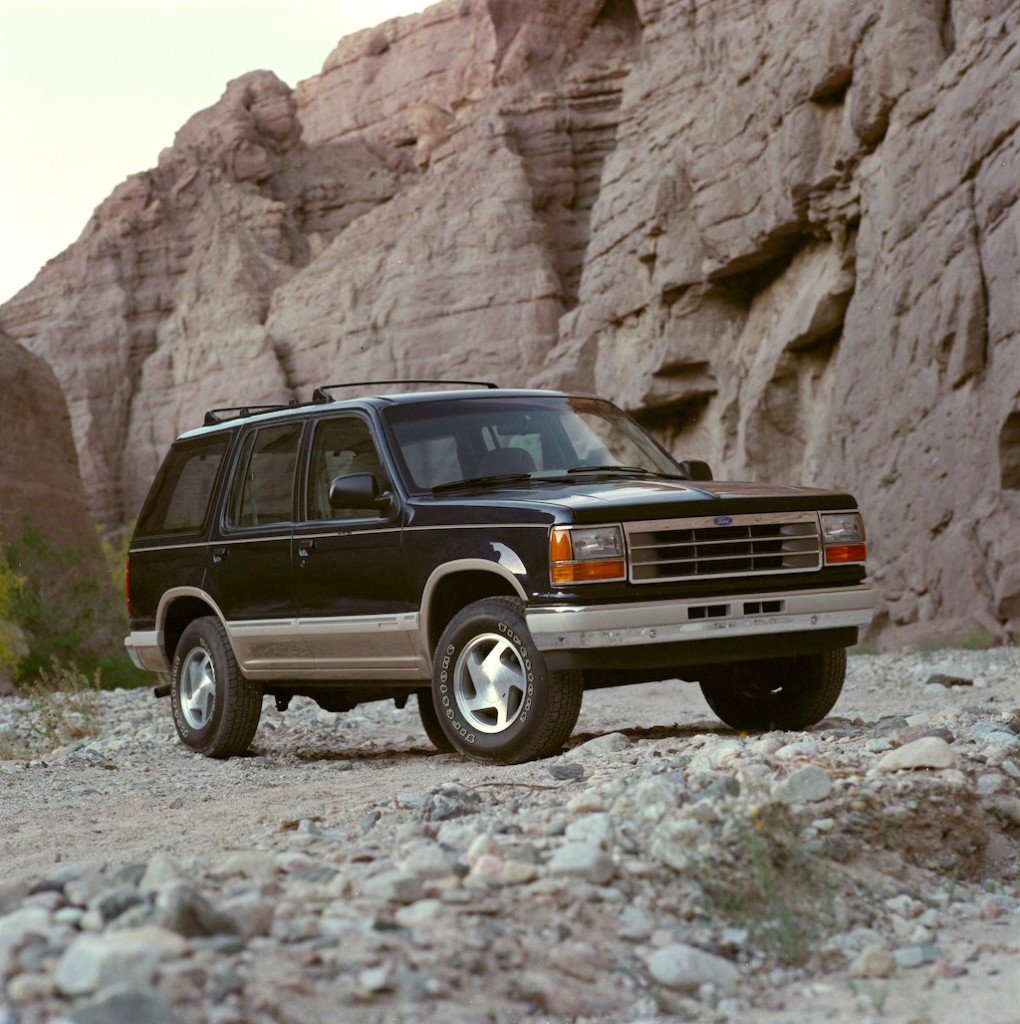 Source: Ford
Source: Ford7. The Ford Explorer-Firestone tires disaster
In 1990, when Ford released its all-new Explorer, SUVs accounted for 7% of the U.S. auto market. By 1999, they accounted for nearly 20%, and were continuing to grow in popularity. The Ford-Firestone rollover scandal of 2000 didn’t stop the popularity of the SUV, but it set off a nationwide panic and drove home just how prone to rollovers the high-riding trucks really were.
The Explorer was introduced to replace the dangerously rollover-prone Bronco II in 1990, and it went on to became one of the one of the best-selling vehicles of the decade. For tires, Ford partnered with Firestone, which had been its preferred tire supplier for nearly 100 years. But when the NHTSA asked both Ford and Firestone to investigate a high rate of blowouts that led to rollovers, Ford blamed Firestone, and Firestone blamed Ford.
Faced with the responsibility of up to 100 deaths worldwide, the tire company initially recalled 6.5 million tires, blaming heat, low tire pressure, and the Explorer’s weight and handling characteristics for the accidents. Ford followed suit a few months later, recalling an additional 13 million tires, with Ford CEO Jaques Nasser declaring, “We simply do not have enough confidence in the future performance of these tires keeping our customers safe.”
After executives from both companies dragged each other through the mud during televised congressional hearings, Firestone and Ford parted ways in 2002. Whether the tires were flawed or Ford’s engineering was bad, it didn’t matter. After millions of dollars were paid out by both companies in lawsuits, neither company has taken full responsibility.
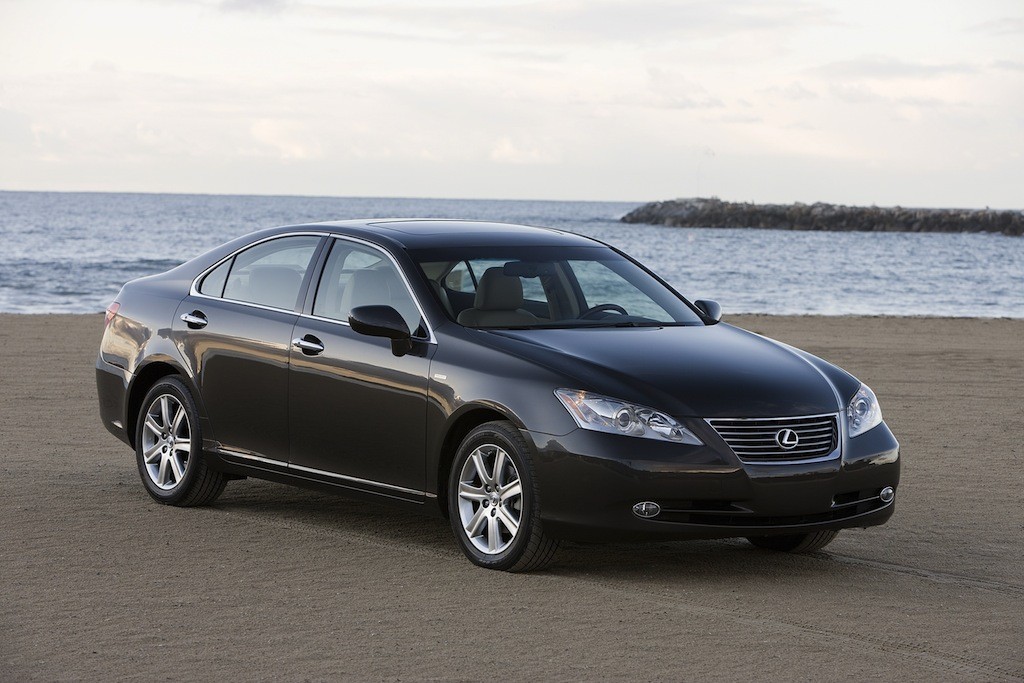 Source: Lexus
Source: Lexus8. Toyota’s unintended acceleration
In 2012, after years of denying unintended acceleration in several Toyota and Lexus models despite mounting evidence, Toyota agreed to pay the U.S. Government $1.2 billion to avoid prosecution, the largest criminal penalty ever imposed on a car company. Like any other major recall, Toyota first tried to blame driver error. Then it suggested that floor mats were somehow impeding the return of the gas pedal, even while the company was hiding documents that showed a flaw in the gas pedal assembly was the culprit.
Toyota, maker of America’s best-selling car (the Camry), first came under fire in 2009, when authorities released an audio recording of a 911 call from California Highway Patrol Officer Mark Saylor’s Lexus after the car began to accelerate on its own. The car reached speeds of 125 miles per hour before Saylor crashed, killing all four occupants. Three years later, Toyota admitted that it misled the public, and recalled 9.3 million vehicles worldwide.
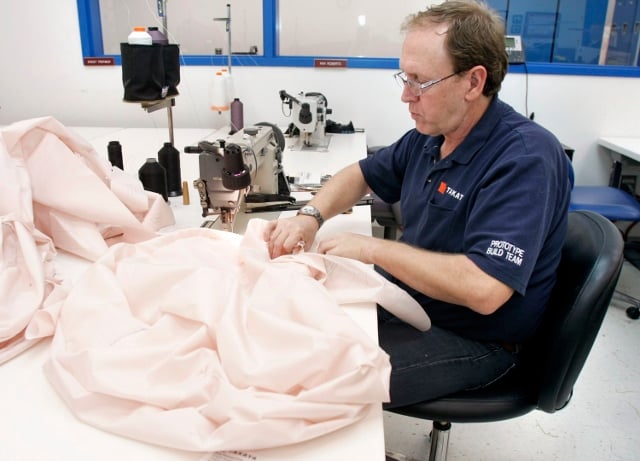 Bill Pugliano/Getty Images
Bill Pugliano/Getty Images9. Takata airbags
There have been plenty of recalls and scandals that have affected millions of vehicles, but nothing quite measures up against the scope of the Takata airbag recall, which involved 10 of the world’s biggest automakers and at least 17 million cars sold around the world. Between 2000 and 2008, Japanese automotive supplier Takata built airbags that could be affected by moisture and deploy with excess force. If the airbag ruptures the metal housing, it can shower the interior with metal shrapnel and chemicals, causing potentially fatal injuries.
In an exposé in the New York Times, it alleged that Takata knew about the potentially fatal flaw as early as 2004 but failed to report their findings to the NHTSA. The U.S. government responded by fining Takata $14,000 for each day of not cooperating with the federal investigation.
While all 10 automakers have been working to fix the issue, it’s estimated that as many as 30 million cars could have the dangerous airbags worldwide. While some of these earlier scandals have had long-lasting repercussions, this one has the potential to drag on for decades. There are plenty of helpful resources online where you can check to see if your car is effected by the recall. If it is, take all appropriate steps to make sure you stay safe.
Editor’s Note: Earlier version of this story claimed that Honda was fined along with Takata. While Honda used Takata airbags in its vehicles, it was fined by the NHTSA for a separate issue, which it has since paid. We regret the error.
 Source: Chevrolet
Source: Chevrolet10. The GM ignition coverup
The Chevy Cobalt should have been an easily forgotten compact car. Instead, it will go down in history alongside the Ford Pinto as one of the most recklessly built and dangerous cars ever sold. In 2007, Chevy recalled 98,000 of the cars because they failed to meet federal safety standards. Then, in 2010, a faulty power steering system led to the recall of an additional 1.3 million cars. But what will make the Cobalt live in infamy is a faulty ignition switch that caused the cars to shut off at speed, deactivating safety systems like airbags and anti-lock brakes, and lead to potentially fatal accidents.
Like most of these scandals, GM knew about the defective part as early as 2004 but found that it would be too costly to fix. When it did decide to address the issue, in 2006, GM went so far as to replace the defective part with an updated one with the same serial number, effectively covering the problem up. After nine years and 13 deaths, GM finally decided to issue 2.6 million recalls for the Cobalt and the nearly identical Pontiac G5.
But the story doesn’t end there. Facing a $10 billion civil suit that could bring the mighty automaker to its knees, GM’s lawyers argue that since these deadly cars were manufactured by the “old” General Motors — the one that went bankrupt in 2009 — and that the new, restructured corporation shouldn’t be held responsible for the matter. While GM tries to pass the blame, it was officially announced this week that the death toll from the faulty ignitions has risen to 90.
11. Volkswagen’s “Dieselgate”
On September 17, 2015, Volkswagen was the world’s largest automaker, and was enjoying modest but encouraging growth in the American market. On September 18, it all came crashing down. That day, the EPA served the German automaker with a violation of the Clean Air Act. Its diesel powered cars – long known for being sportier, cleaner, and more efficient than competitors – had used software that allowed the car to pass emissions testing with flying colors, then shutting off for normal driving. As a result, the diesel cars ended up polluting far more than any of their competitors. “Stop Sale” notices were issued on the cars, leaving them to clog dealer lots, millions of angry customers demanded answers and compensation, and Volkswagen sales (at least in the U.S.) fell off a cliff. By latest count, the whole mess will cost Volkswagen upwards of $14.7 billion in the U.S. alone. Only time will tell what the full repercussions will be.
Check out Autos Cheat Sheet on Facebook and Twitter.
Like classics? It’s always Throwback Thursday somewhere.
Follow Derek on Twitter @CS_DerekS
More from Autos Cheat Sheet:
'); } /* * Revcontent */ else if(csads.btf_rec_widget_images.widget == 'revcontent') { var rcId = csads.btf_rec_widget_images.rc_id; document.write('
'); (function(publisherCategories, defaultWidgetID) { if(!publisherCategories){ publisherCategories = []; } var totalCategories = publisherCategories.length; var rcWd = csads.btf_rec_widget_images.rc_wd; var rcDefaultWidgetID = defaultWidgetID || rcWd; var rcCatMap = csads.btf_rec_widget_images.rc_cm; var rcContextualCatID = undefined; if(totalCategories > 0){ for(c=0; c
Komentar
Posting Komentar